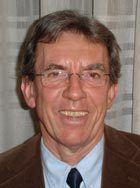Name Jean-Pierre Sauvage Role Chemist | ||
 | ||
Nobel lecture jean pierre sauvage nobel laureate in chemistry 2016
Jean-Pierre Sauvage ([ʒanpjɛʁ sovaʒ]; born 21 October 1944) is a French coordination chemist working at Strasbourg University. He has specialized in supramolecular chemistry for which he has been awarded the 2016 Nobel Prize in Chemistry along with Sir J. Fraser Stoddart and Bernard L. Feringa.
Contents
- Nobel lecture jean pierre sauvage nobel laureate in chemistry 2016
- Intervista a jean pierre sauvage premio nobel per la chimica 2016
- Biography
- References

Intervista a jean pierre sauvage premio nobel per la chimica 2016
Biography
Sauvage was born in Paris in 1944, and earned his PhD from the Université Louis-Pasteur under the supervision of Jean-Marie Lehn, himself a 1987 winner of the Nobel Prize in Chemistry. During his PhD work, he contributed to the first syntheses of the cryptand ligands. After postdoctoral research with Malcolm L. H. Green, he returned to Strasbourg, where he is now emeritus professor.
Sauvage's scientific work has focused on creating molecules that mimic the functions of machines by changing their conformation in response to an external signal.
His Nobel Prize work was done in 1983, when he was the first to synthesize a catenane, a complex of two interlocking ring-shaped molecules, which were bonded mechanically rather than chemically. Because these two rings can move relative to each other, the Nobel Prize cited this as a vital initial effort towards making molecular machine. The other two recipients of the prize followed up by later creating a rotaxane and a molecular rotor.
Other research includes electrochemical reduction of CO2 and models of the photosynthetic reaction center.
A large theme of his work is molecular topology, specifically mechanically-interlocked molecular architectures. He has described syntheses of catenanes and molecular knots based on coordination complexes.
He was elected a correspondent member of the French Academy of Sciences on 26 March 1990, and became a member on 24 November 1997. He is currently emeritus professor at the University of Strasbourg (Unistra).
He shared the 2016 Nobel Prize in Chemistry "for the design and synthesis of molecular machines" with Sir J. Fraser Stoddart and Bernard L. Feringa.
